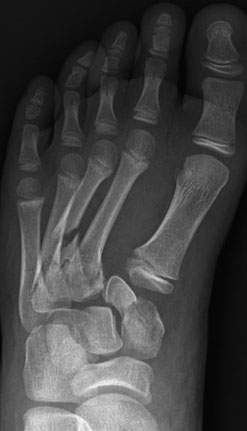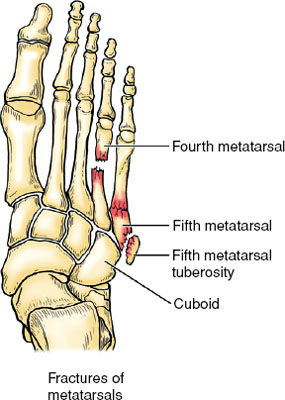
LEGAL DISCLAIMER ( to make sure that we are all clear about this): The information on this website and podcasts are the opinions of the authors solely.įor Health Care Practitioners: This writing is provided only for medical education purposes.


May extend to metatarsal-cuboid joint or to the joint with 4th metatarsal.Tubercle fracture that extends to intra-articular area.Displaced avulsions may take longer to heal, but do so with low rate of complications.Fracture at the base of the 5th metatarsal tubercle.There are 5 types of 5th metatarsal fractures:.More likely to fracture 5th metatarsal!ĥth Metatarsal Fractures: Location Matters.Greater likelihood of being related to sport activities.More likely (> 50% of cases) to be injured by “Fall” from Standing.More likely to fracture 1st metatarsal!.More likely (>50% of cases) to be injured by Fall from Height.Metatarsal fractures are frequently missed on initial inspection of radiographs.

When 2nd, 3rd, or 4th metatarsals are fractured, they are frequently associated with another metatarsal fracture, while 1st and 5th metatarsal fractures can be isolated.Twisting mechanism (like during sports).The 5th metatarsal is the most commonly fractured metatarsal in children.With increasingly active children (and Extreme Sports), foot fractures are becoming more common.

Certainly, the foot is a frequently injured area (ex, Plantar Puncture Wounds), but do foot fractures warrant special consideration also? Let’s take a minute to digest a morsel on Metatarsal Fractures in Children: We have already discussed how Ankle Injuries need to be thought of a little differently in children. With that being said, their immature skeleton can often bring additional considerations into play when evaluating kids for possible fractures (ex, Toddler’s Fracture, Nasal Fractures, Pelvic Avulsion Fractures). Children are incredibly resilient and their tissues are very pliable and plastic.


 0 kommentar(er)
0 kommentar(er)
